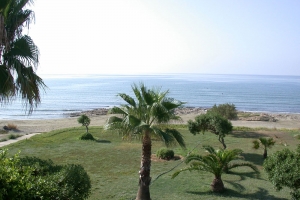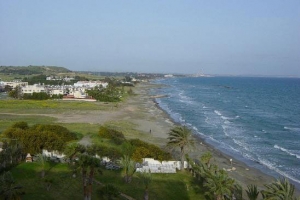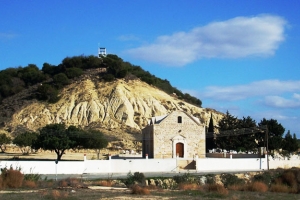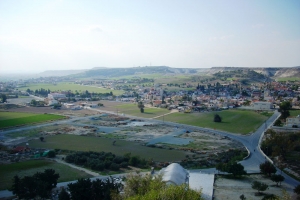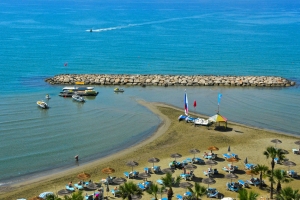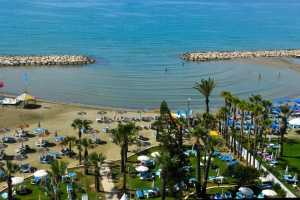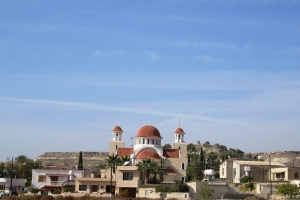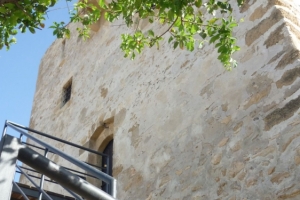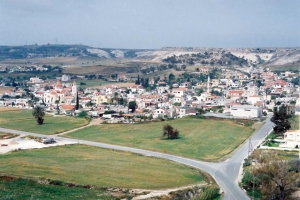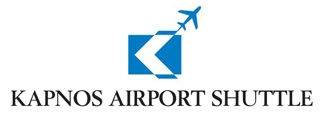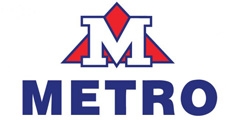PYLA
Pyla is a village built northeast of the city of Larnaka. It is a community with a rich history and significant archaeological sites. While strolling around Pyla, you will get to see important archaeological sites, a medieval tower, the Fork Art Museum, the Turkish Cypriot Mosque, the Cultural Centre, the old Police Station, as well as a beautiful beach offering several facilities. So, let’s get to know more of the village.
Historical Background
The area of the village appears to have been inhabited ever since the ancient times and more specifically during the Early and Middle Bronze Age (2400-1700 B.C.) as it is proven by the archaeological excavations which took place in the area. More: Antiquities. The village existed during the medieval years as well. According to De Mas Latrie, the village was originally a private fief, while later on it became a royal estate. In particular, as the Great Cyprus Encyclopaedia preserves, while a private fief the village belonged to Jean de Brie, prince of Galilee, whereas later on it became the property of the medieval family de Giblet.
During the same period, that is the medieval years, a tower with a hanging bridge or a wooden staircase was constructed and is still standing today. The tower of Pyla, along with the other towers-observatories of the Larnaka bay, used to guard the area. In 1425, when according to Leontios Machairas the Saracens attacked the area, two of them attacked Pyla and other neighbouring villages. As it has already been mentioned, the village was once royal property. This happened during the Frankish occupation. However, later on and more specifically during the Venetian period, the village became state property and was confiscated by the Turks in 1570-71. At that time, Turks came and settled at the village without however managing, as the Great Cyprus Encyclopaedia explains, to displace the Greek residents like they had done in other villages. Thus, the village became and remained mixed even after the Turkish invasion.
The name of the village is probably linked to the word “Pyli” (gate) and this is due to its location. According to this version, the village constitutes the gate which leads to the plain of Mesaoria. However, according to a second version, the naming of the village is not linked to its location but to the colonization of the village by the Achaeans. As the Great Cyprus Encyclopaedia explains, the naming of the community is linked to the ancient Greek toponyms such as the ancient city of Pylos. This opinion is supported by the fact that excavations have proven that there used to be an ancient housing at the time of the colonization.
It is also likely that the original naming of the village was written in plural form, similarly to other archaeological toponyms. If that was the case, then the community was initially called “Pylae”. In medieval sources, the village is refered to by the name of Pila or Pilla, as well as by the naming Les Piles. On medieval maps and texts such as the Assizes, as well as in a text written by De Mas Latrie, the village is marked as Pila.
Pyla is a village which, as it has already been mentioned, is inhabited by both Greek Cypriots and Turkish Cypriots. Presented below is the populating course of Pylar starting from 1881 until 2001. By studying the cited table one observes that from 1881 until 1973 and from 1976 until 2001 there was a constant increase in the population of the village. According to the Great Cyprus Encyclopaedia, in 1946, out of the 866 residents 598 of them were Greek-Cypriots and 268 Turkish-Cypriots, while in 1960 out of the 961 residents 618 of them were Greek-Cypriots and 343 were Turkish Cypriots. In 1973, out of the 1074 residents 586 of them were Greek Cypriots and 488 were Turkish Cypriots.
